
伤口世界
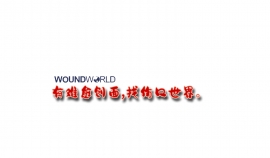
- 星期二, 03 1月 2023
Challenges faced in developing an ideal chronic wound model
Mandy Li Ling Tan, Jiah Shin Chin, Leigh Madden & David L. Becker
To cite this article: Mandy Li Ling Tan, Jiah Shin Chin, Leigh Madden & David L. Becker (2022): Challenges faced in developing an ideal chronic wound model, Expert Opinion on Drug Discovery,
DOI: 10.1080/17460441.2023.2158809
To link to this article: https://doi.org/10.1080/17460441.2023.2158809
© 2022 The Author(s). Published by Informa
UK Limited, trading as Taylor & Francis
Published online: 26 Dec 2022.
Submit your article to this journal
Article views: 37
View related articles
View Crossmark data
Full Terms & Conditions of access and use can be found at https://www.tandfonline.com/action/journalInformation?journalCode=iedc20
Mandy Li Ling Tana,b# , Jiah Shin Chinb# , Leigh Maddenb and David L. Beckerb,c,d a Nanyang Institute of Health Technologies, Interdisciplinary Graduate School, Nanyang Technological University, 639798, Singapore; b Lee Kong Chian School of Medicine, Nanyang Technological University, 308232, Singapore; c Skin Research Institute Singapore, Clinical Sciences Building, 11 Mandalay Road, 308232, Singapore; d National Skin Centre, Mandalay Road, Singapore
ABSTRACT
Introduction: Chronic wounds are a major drain on healthcare resources and can lead to substantial reductions in quality of life for those affected. Moreover, they often precede serious events such as limb amputations and premature death. In the long run, this burden is likely to escalate with an ageing population and lifestyle diseases such as obesity. Thus far, the identification of beneficial therapeutics against chronic wounds have been hindered by the lack of an ideal chronic wound animal model. Although animal models of delayed healing have been developed, none of these models fully recapitulate the complexity of the human chronic wound condition. Furthermore, most animals do not develop chronic wounds. Only the thoroughbred racehorse develops chronic ulcers.
Areas covered: In this review, the different characteristics of chronic wounds that highlight its complexity are described. In addition, currently available models reflecting different aspects of chronic wound pathology and their relevance to human chronic wounds are discussed. This article concludes by listing relevant features representative of an ideal chronic wound model. Additionally, alternative approaches for the development of chronic wound models are discussed.
Expert opinion: Delayed models of healing, including the streptozotocin diabetic model, skin flap model and magnet-induced IR models have emerged. While these models have been widely adopted for preclinical therapeutic testing, their relevance towards human chronic wounds remains debatable. In particular, current delayed healing models often fail to fully incorporate the key characteristics of chronic ulcers. Ultimately, more representative models are required to expedite the advancement of novel therapeutics to the clinic.
ARTICLE HISTORY
Received 5 October 2021 Accepted 12 December 2022
KEYWORDS
Animal models; biofilm infection; chronic wounds; delayed healing models; delayed wound closure; excessive extracellular matrix degradation; hyper thickened epidermis; increased senescent cells population; persistent inflammation
- 星期五, 30 12月 2022
氦氖激光治疗喀什地区儿童弱视的随机对照研究
艾则孜●吾买尔,姜爱新,曹淑娟
(喀什地区第一人民医院眼科中心,新疆喀什844000)
[摘要] 目的:通过随机对照试验,观察氦氖激光在喀什地区弱视儿童中的治疗效果。方法:选取2016年2月至2018年11月期间就诊喀什地区第一人民医院符合纳排标准的弱视儿童,按随机数字表法,分为试验组(氦氖激光+弱视常规治疗组)与对照组(弱视常规治疗组),比较两组的弱视治疗效果。
结果:本试验成功纳入弱视儿童111例(177眼),其中试验组61例(97眼),对照组S0例(80眼)。与对照组相比,汉族试验组弱视儿童效果明显(P=0.023),维吾尔族试验组弱视儿童未见明显疗效(P=0.481);试验组与对照组在喀什地区不同年龄、不同弱视程度、不同弱视类型及不同弱视眼数儿童中未见明显差异(P>0.05)。结论:氦氖激光治疗喀什地区弱视儿童作用有限,为避免过度医疗,不建议在南疆地区开展。
[关键词] 氦氖激光;弱视;随机对照研究
Efficacy of helium-neon laser in amblyopia of Kashgar children: A randomized controlled trial
AizeziWUMAIER, JIANG Aixin, CAO Shujuan
(Ophthalmological Center, First People's Hospital in Kashgar, Kashgar Xinjiang 844000, China)
Abstract Objective: To observe the therapeutic effect of helium-neon laser in amblyopia children in Kashgar by a randomized controlled trial. Methods: Amblyopia children who met eligibility criteria during February 2016 to November 2018 were selected and divided into two groups according to random number table: test group (helium neon laser + conventional treatment for amblyopia) and control group (conventional treatment for amblyopia). The effects of amblyopia treatment were compared between two groups. Results: One hundred and eleven amblyopic children (177 eyes), including 61 children (97 eyes) of the test group and 50 children (80 eyes) of the control group were included in this study. The efect of helium-neon laser was significant in Han children (P=0.023), but not in Uygur children (P=0.481) in the test group compared with the control group.
Condusion: Helium-neon laser has limited effect in treating children with amblyopia in K ashgar region. To avoid over-treatment, it is not recommended to perform it in southern Xinjiang.
Keywords:helium neon laser; amblyopia; randomized controlled trial
- 星期四, 29 12月 2022
二氧化碳点阵激光美容技术应用于色素痣治疗中临床效果分析
陈敏,高春雪
(吉林国健美容医院,吉林长春,130013)
[摘要]目的探讨激光美容技术治疗色素性疾病色素痣的临床效果,为临床使用提供参考依据。方法选取我院2016年16月~ 2018年16月所收治色素痣色素性疾病患者78例,随机分为研究组和对照组。对照组39例,予以微创切除术;研究组39例,予以激光美容针。比较两组临床表现、疗效、不良反应差异。结果研究组患者中, 创面愈合时间为(8.19士 1.76)d、创面疼痛评分为(2.21+1.07) 分,均显著低于对照组,t分别为8.253、 4.761, 差异具有统计学意义(P< 0.05) 。研究组总有效率为97.44%,明显高于对照组的79 . 49%,(P< 0.05)。研究组患者中,色素沉着12例、红斑1例,不良反应发生率为33.35%,明显低于对照组的69.23%, X2为8.672,差异具有统计学意义(P< 0.05)。结论激激光 美容技术可明显提升色素痣临床疗效,缩短治疗周期,减轻患者痛苦,且不良反应更少,安全性高,更有利于改善患者外貌美观度, 值得临床推广应用。
[关键词]激光美容; 色素痣;不良反应 DOI; 10. 19593/j. issn. 2095-0721. 2019. 01. 016
Clinical effect analysis of carbon dioxide lattice laser cosmetic technique in the treatment of pigmented nevus CHEN Min, GAO Chun-xue (Jilin National Health and Beauty Hospital, Jilin Province, 130013,China)
[ABSTRACT] Objective To investigate the clinical effect of laser cosmetology in the treatment of pigmented nevus of pigmentary diseases, and to provide reference for clinical use. Methods 78 patients with pigmented nevus treated in our hospital from June 2016 to June 2018 were randomly divided into study group and control group. 39 cases in the control group were treated with minimally invasive resection and 39 cases in the study group were treated with laser cosmetic needle. The differences of clinical manifestations,curative effects and adverse reactions between the two groups were compared. Results In the study group, the wound healing time was (8.19+1.76) D and the wound pain score was (2.21+1 .07), which were significantly lower than those in the control group, t was 8.253 and 4.761, respectively, with statistical significance (P <0.05);The total effective rate was 97.44% in the study group, which was signifcantly higher than 79.49% in the control group (P <0.05); There were 12 cases of pigmentation and 1 case of erythema in the study group. The incidence of adverse reactions was 33.33%, which was significantly lower than 69.23% and 8.672 in the control group (P <0.05);. Conclusion Laser Laser Beauty Technology can significantly improve the clinical eficacy of pigmented nevus, shorten the treatment cycle, aleviate the pain of patients, and less adverse reactions, high safety, more conducive to improving the appearance and beauty of patients, worthy of clinical application.
[KEY WORDS] laser cosmetology; pigmented nevus; adverse reactions
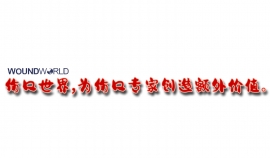
- 星期三, 28 12月 2022
阈下微脉冲激光在眼科疾病治疗中的应用
赵宏锟,邹悦,李云琴
引用:赵宏锟,邹悦,李云琴.阈下微脉冲激光在眼科疾病治疗中的应用.国际眼科杂志2020;20(1) :92-95
基金项目:云南省科技厅-昆明医科大学应用基础研究联合专项
资金项目[ No.2017FE467(- 146), 2018FE001(-077)];白求恩●朗沐中青年眼科科研基金( No. BJ-LM2018009J)
作者单位:(650021)中国云南省昆明市,云南省第二人民医院
昆明医科大学第四附属医院云南省眼科医院
作者简介:赵宏锟,硕士研究生,住院医师,研究方向:眼底病。
通讯作者:李云琴,博士,副主任医师,研究方向:眼底病.
liyunqin2004@ 126.com
收稿日期: 2019-06-21
修回日期: 2019-11-21
摘要
阈下微脉冲激光( SML)是-种短促重复的脉冲激光,与传统激光相比,SML不会破坏视网膜色素上皮(RPE)细胞,也不会留下激光斑,是一-种相对安全的治疗手段。SML可能的作用机制是通过重复的阈值下能量激活RPE细胞,促使热休克蛋白表达增加,从而启动RPE细胞的调节修复功能。目前SML的适应证主要有中心性浆液性脉络膜视网膜病变、糖尿病性黄斑水肿、视网膜静脉阻塞继发黄斑水肿、重度非增殖期糖尿病视网膜病变和增殖期糖尿病视网膜病变。本文旨在综述SML的作用机制及其在各适应证中的应用,以期为SML的临床应用提供参考。
关键词:阈下微脉冲激光;应用;机制;中心性浆液性脉络膜视网膜病变;糖尿病性黄斑水肿;糖尿病视网膜病变;视网膜静脉阻塞
DOI: 10.3980/j. issn.1672- 5123.2020.1.21
Process in application of subthreshold micropulse laser
Hong- -Kun Zhao, Yue Zou, Yun- Qin Li .
Foundation items: Yunnan Science and Technology Department -Kunming Medical University Joint Fund for Applied Basic Research [ No.2017FE467(-146); 2018FE001( -077)]; Bethune ●Lumitin Young Ophthalmology Research Fund ( No. BJ-LM2018009J)
The Second People's Hospital of Yunnan Province; the Fourth Affiliated Hospital of Kunming Medical University; Yunnan Eye Hospital , Kunming 650021, Yunnan Province , China
Correspondence to: Yun-Qin Li. The Second People's Hospital of
Yunnan Province ( The Fourth Affiliated Hospital of Kunming
Medical University; Yunnan Eye Hospital), Kunming 650021 ,
Yunnan Province,China. liyunqin2004@ 126.com
Received :2019-06-21
Accepted:2019-11-21
Abstract
●Subthreshold micropulse laser ( SML) consists of shortrepetitive pulses of laser. This kind of treatment is safe and cheap, and contrary to conventional laser photocoagulation ( LPC ),SML doesn ’t involve destruction of retinal cells and leave no scars. The possible mechanism of SML is to stimulate retinal pigment epithelium ( RPE) cells for the production of heat shock proteins ( HSPs) and regulate its metabolism and improve its function. The clinical indication of SML includes central serous chorioretinopathy ( CSC),diabetic retinopathy edema ( DME ), nonproliferative diabetic retinopathy ( NPDR) and proliferative diabetic retinopathy ( PDR) and macular edema ( ME) secondary to retinal vein occlusion ( RVO ). This article discussed the mechanism and safety of SML and reviewed the updates of its application.
KEYWORDS: subthreshold micropulse laser; application; mechanism ; central serous chorioretinopathy; diabetic macular edema; diabetic retinopathy; retinal vein occlusion
Citation: Zhao HK, Zou Y, Li YQ. Process in application of subthreshold micropulse laser. Guoji Yanke Zazhi ( Int Eye Sci ) 2020;20(1) :92-95
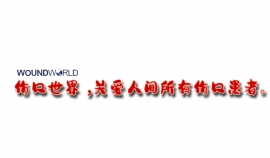
- 星期二, 27 12月 2022
低能量激光治疗在牙周组织 愈合中的作用
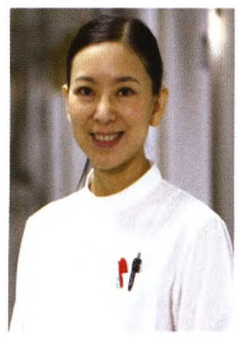
冯洁.刘怡
刘怡,教授、主任医师、博士研究生导师。现任首都医科大学附属北京12腔医院牙周科主任。兼任中华口腔医学会牙周病学专业委员会常务委员、口腔激光专业委员会常务委员,Oral Diseases等中英文杂志编委。主要研究领域为12腔颌面部组织再生及转化医学,尤其在宿主微环境参与调控颌面骨再生方面取得原创性成果。在Nature Medicine、Cell Stem Cell等期刊发表SCI收录论文50余篇。作为负责人承担国家自然科学基金资助课题5项。入选科技部“万人计划”、科技部创新人才推进计划“中青年科技创新领军人才”、国家自然科学基金委员会“优秀青年科学基金”获得者等。研究成果以第一完成人获中华医学科技奖三等奖、北京医学科技奖二等奖。获中国女医师协会五洲女子科技奖、中华口腔医学科技创新人物等荣誉称号。
摘要:近年来激光在口腔医学领域的应用日益广泛。在牙周治疗中。激光可用来进行牙结石去除、根面处理、软组织及骨修整等,参与到牙周治疗的各个环节,起到很好的辅助牙周治疗作用。低能量激光是指能量较温和、治疗时不产生热量的一类激光。在牙周治疗时可利用其生物刺激功能起到抑制牙周炎症、促进创12'愈合及牙周组织再生等方面的作用。文章主要介绍低能量激光的特点、作用机制及临床使用方法,为低能量激光治疗在临床的进一步推广应用提供思路。
关键词:低能量激光治疗;生物调节;牙周组织;创口愈合
中图分类号:R78文献标志码:A
Effects of low level laser therapy on periodontal tissue wound healing FENG Jie.LIU Yi.Department of periodontics,Beijing Stomatological Hospital,Capital Medical University,Beijing 100050,China Corresponding author:LIU Yi,E—mail:lililiuyi@163.com
Abstract:In recent years,laser is widely used in the field of oral therapy.In periodontal treatment,laser can be used to scaling,root planing,soft tissue and bone repair.It is a useful assistant therapeutic method for periodontal treatment.Low level laseris a kind of laser which has lower energy and does not produce heat during treatment.Low level laser therapy can inhibit inflammation,promote wound healing and enhance periodontal tissues regeneration during periodontal treatment.This review mainly introduced the characteristics, working mechanism,clinical application method of low energy laser,aiming to provide therapeutic methods for further clinical application.
Keywords:low level laser therapy;biomodulation;periodontal tissue;wound healing
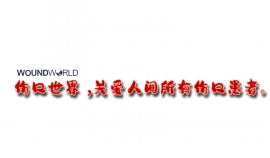
- 星期一, 26 12月 2022
强脉冲光子嫩肤仪治疗面部毛细血管扩张症的价值探讨
朱淸海 1 ,姚光霄 1 ,李 静 1 ,马永红 1 ,朱淸江 2
(1. 中部战区空军医院整形美容科,山西 大同,037006;
2. 中国人民解放军 32135 部队,山西 大同,037034)
【摘 要】 目的 观察在面部毛细血管扩张症患者中光子嫩肤仪的治疗价值。方法:选择 2018 年 3 月 -2019 年 8 月,在我院进行面部毛细血管扩张症诊治的患者 144 例,按照随机数字法分为对照组和观察组,每组各 72 例。其中对照组患者采用系统药物治疗,观察组患者采用光子嫩肤仪进行相关治疗,观察两组患者治疗效果。结果:经研究结果显示,在观察组患者中,痊愈占比率为 29%,显效占比率为 51%,有效占比率为 19%,治疗总有效率为 100%,无效率为 0%,在对照组患者中,痊愈占比率为 22%,显效占比率为 43%,有效占比率为 18%,治疗总有效率为 17%,无效率为 18%,可见,观察组总有效率明显高于对照组,组间差异具有统计学意义(P<0.05)。结论:在面部毛细血管扩张症患者中采用光子嫩肤仪进行相关治疗,可取得显著疗效,因此,该治疗方法具有被临床推广使用的价值。
【关键词】光子嫩肤仪;面部毛细血管扩张症;应用价值
DOI:10.19593/j.issn.2095-0721.2020.01.012
Study on the value of intense pulse photorejuvenation instrument in the treatment of facial
telangiectasia ZHU Qing-hai1 , YAO Guang-xiao1 , LI Jing1 , MA Yong-hong1 , ZHU Qingjiang2 (1.Department of plastic surgery, Air Force hospital, central theater, Shanxi Province, 037006, China; 2. PLA 32135, Datong City, Shanxi Province, 037034, China)
[ABSTRACT] Objective To observe the therapeutic value of photon rejuvenation apparatus in patients with facial telangiectasia.
Methods From March 2018 to August 2019, 144 patients with facial telangiectasia were selected and divided into control group and observation group according to the random number method, 72 cases in each group. Among them, the patients in the control group were treated with systemic drugs, the patients in the observation group were treated with photon rejuvenation apparatus, and the therapeutic effects of the two groups were observed. Results The results showed that in the observation group, the recovery rate was 29%, the effective rate was 51%, the effective rate was 19%, the total effective rate was 100%, and the ineffective rate was 0%. In the control group, the recovery rate was 22%, the effective rate was 43%, the effective rate was 18%, the total effective rate was 17%, and the ineffective rate was 18%. It can be seen that the total effective rate of the observation group is clear The difference was statistically significant (P<0.05). Conclusion In the face of telangiectasia patients, the use of photon rejuvenation instrument for related treatment can achieve significant results, therefore, the treatment method has the value of clinical application.
[KEY WORDS] intense pulse photon rejuvenation apparatus; facial telangiectasia; application value
